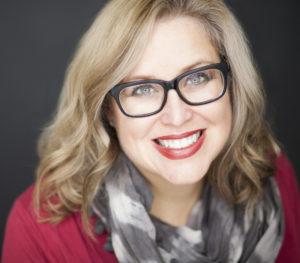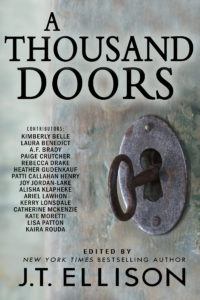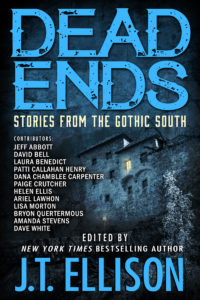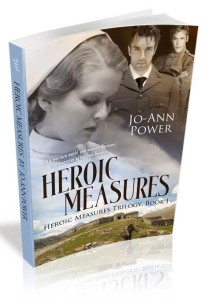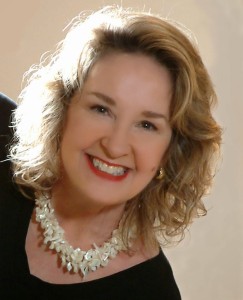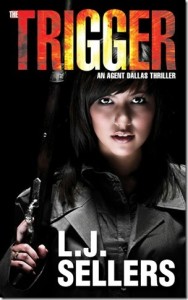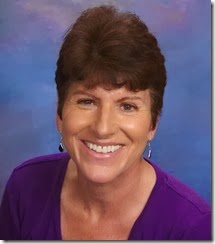I invited my buddy, Garry Rodgers, back to TKZ for a fascinating behind-the-scenes trip to the morgue. He’ll hang around for questions/comments, so don’t be shy. Now’s your chance to ask an expert something you might need for your WIP. Enjoy!
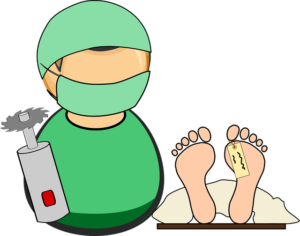
Most living people never visit the morgue.
Most never think of the morgue except when watching TV shows like CSI or some new Netflix forensic special. The screen may show in hi-def and tell in surround sound, but it can’t broadcast smell. That’s a good thing because no one would tune in and the actors would be looking for real-life morgue jobs like homicide cops, coroners and forensic pathologists.
I did two of those real-life morgue jobs for a long time. I’m a retired murder cop and field coroner who spent a lot of hours in that windowless place. Now, I’m a crime writer and thought I’d share a bit of what really goes on in the morgue with my crime-writing colleagues.
The morgue is strictly off-limits for anyone not having a specific reason to be there. That’s for a few reasons. One is the place can hold sensitive court evidence. Two is that it’s a somewhat disagreeable place due to the odor, temperature and the continual chance of contracting a contagious disease. The third reason is dignity. Even though the majority of the morgue occupants are no longer alive, they’re still human entities and not some sort of a morbid exhibit.
The morgue is a place of business. It’s a medical environment where the deceased are stored, processed and released to their final disposition. The morgue operates 24/7/365 as death pays no attention to the clock or the calendar. But, the morgue is busiest between 8:00 am and 4:30 pm Monday to Friday—holidays exempted. Morgue workers need time off like anyone else.
A city morgue, like I worked at in Vancouver, British Columbia, is an active environment. It has a dedicated shipping and receiving area with a loading dock much like a typical warehouse. Bodies arrive by black-paneled coroner vans or on sheet-covered gurneys brought down from the wards. They’re booked into a ledger, assigned a crypt and, yes, marked with a personalized toe tag.
Vancouver General Hospital’s morgue is like Costco for the dead. Stainless steel refrigeration crypts, stacked three-high in two rows of nine, have shelving for fifty-four. The freezer unit stores eight and isolation, for the stinkers, can take six sealed aluminum caskets or “tanks” as we called them. These tanks are also used for homicide cases, locked to preserve forensic evidence.
A grindy overhead hoist shifts cadavers from wheeled gurneys that squeak about fluorescent-lit rooms, touring them to and from roll-out metal drawers. Refrigeration temperatures are ideally set at 38-degrees Fahrenheit (4-degrees Celsius) while the ambient range in the autopsy suites is held at a comfortable 65 / 18. The storage rooms, laboratory and administration areas are normal office temperature, and they’re set apart from the main morgue region. Support staff, for the most part, have no sense of being so near to the dead.
Operational personnel in the morgue are highly-trained professionals. The workhorse of the morgue is the autopsy technician or attendant called the “Diener”. It’s a term originating from German that translates to “Servant of the Necromancer”. Dieners have the primary corpse handling and general dissection responsibility. They do most of the cutting.
Hospital pathologists are primarily disease specialists. They spend the majority of their day in the laboratory peering into microscopes and dictating reports. It’s a rare general pathologist who stays with an autopsy procedure from incision to sew-up. Usually, hospital pathologists come down to the morgue once the diener has removed the organs and has them ready for cross-section.
A hospital pathologist takes a good look for what might be the anatomical cause of a sudden or unexplained death. The main culprits are usually myocardial infarctions, or “jammers” as they called in the heart attack word. Aneurisms are another leading cause of dropping dead, and they’re often found in the brain.
Hospital pathologists sometimes do partial autopsies when they want to confirm an antemortem diagnosis. That might be a certain tumor or the extended effects of a runaway respiratory disease like Covid19. Sometimes, there’s no clear cause of death such as in a heart arrhythmia or a case of toxic shock.
Forensic pathologists are an entirely different animal. These are meticulous medical examiners with a tedious touch. It takes years of specialized training and understudy to become a board-certified forensic pathologist qualified to give expert evidence in criminal cases.
Forensic autopsies are peak-of-the-apex procedures inside the morgue. In a setting like Vancouver General Hospital (VGH), there are six autopsy stations in one open room. At any given time, the slabs are occupied and there more in the pipe. Not so with a forensic procedure.
There are two segregated and dedicated suites for forensic autopsies at VGH. Protection of the corpse, which is the best evidence in homicide cases, is paramount. So is maintaining continuity of possession, or the chain of evidence, that ends up in court. In a forensic autopsy, there’s utmost care to ensure the body is not compromised by contaminating it with foreign matter like DNA or losing critical components like bullets or blades.
In a homicide case, the body is taken from the crime scene in a sterilized shroud and locked in a tank. There’s an officer or coroner appointed to maintain continuity from the time the cadaver is bagged until the corpse is laid out on the slab. This is a critical element in forensic cases and one that is treated as gospel.
A forensic pathologist stays with the autopsy from the time the body is unlocked from its tank till the time the pathologist feels there is no more evidentiary value to glean. This is usually a full-day event but sometimes the body is put back in the tank, held overnight, and the process goes on the next day. This completely depends on the case nature such as multiple gunshot or knife wounds.
There are police officers at every forensic autopsy. Those are the crime scene examiners who photograph the procedure and pertinent physical properties. Detectives receive evidentiary exhibits like foreign objects such as fired bullets or organic particulates. There might be semen samples or other questionable biological matter. Then, there are usual suspects for toxicology examination like blood, urine, bile, stomach contents and vitreous fluid.
Radiography is done in almost all forensic autopsy cases. A portable X-ray machine scans the body as it lies on the table. In some situations, MRI / CT technology is helpful.
But, nothing beats the eye and experience of a seasoned forensic pathologist. They observe the slightest details that even a general pathologist would miss. However, don’t dismiss what a good diener can spot. It’s a treat to watch a forensic pathologist and a diener work when they’re in synch.
At day’s end, folks in the morgue are much like anyone else. They have a market to serve and they do it well. They’re also prone to talk shop in a social setting. There’s nothing like having drinks with a diener who’s into black humor.
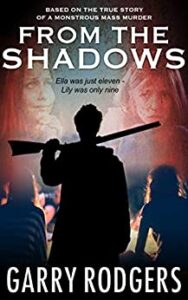
What if six members—three generations—of your family were slain in a monstrous mass murder?
FROM THE SHADOWS is part of Garry’s “Based on True Crime” series. Available on Amazon and Kobo.
I couldn’t write a piece about what really goes on in the morgue without a few war stories. In my time as a cop and a coroner, I’ve been around hundreds of cadaver clients. Maybe more like thousands, but I never kept track. There were a few, though, that I’ll never forget.
One was “Mister Red Pepper Paste Man”. My friend Elvira Esikanian, a seasoned forensic pathologist of Bosnian descent who cut her teeth by exhuming mass graves, is a gem. She also has a wicked eye for detail.
I brought this old guy into the morgue after finding him dead in his apartment. Neighbors reported him screaming like someone was skinning a live cat. They rushed in and found him collapsed on the floor. No idea what killed him, but no sign of foul play.
Elvira opened his stomach and it was positively crawling. She knew what it was—botulism. Elvira told me to go back to the scene and look to see what he’d been eating. I found it. It was a jar of red pepper paste that was years past its expiry date, and the inside was a mass of organic activity.
Then, there was Kenny Fenton. He was found dead after being dumped beside a rural road and left to rot for a week in hot weather. I brought him into the morgue as intact as possible but it wasn’t easy. Kenny went into a stinker tank before Dr. Charlesworth could take him on.
As a routine, Kenny had a radiography session before his dissection. It showed a bullet in his gut. Not a run-of-the-mill bullet, of course. It was a .22 short with no rifling engraved on its sides.
Turns out, Kenny was accidentally shot in the neck by a Derringer dueling pistol. The bullet cut his carotid, hit his spinal cord, bounced back to his esophagus and he swallowed the dammed thing before bleeding out and dying fast. The crew he was with thought it was better to dump Kenny than report it.
And I can’t wrap up without a bit of spring foolishness that went on in the morgue. It involved my buddy—Dave the Diener.
Dave had about thirty years in the crypt before he met me. In fact, Dave had something to do with me getting hired by the coroner’s office because he thought I might be a good fit. Dave may, or may not, have been right.
It was the First of April and a Friday morning. Dave liked Fridays because he usually left early once his cutting was done. I don’t think there’s anything wrong with that, and I’ve done it myself.
But this Friday was different—probably had something to do with the date. I snuck into the morgue real early and prepared Dave’s first case. I needed some weight so he wouldn’t suspect anything off the bat. I put a bunch of concrete patio blocks on the crypt’s drawer base. Then, I placed my cadaver inside a shroud and laid it on top. I even attached a toe tag and made the right entries in the ledger.
I wasn’t there but sure heard from the other staff who were in on it. Dave rolled-out his first subject-for-the-day and unzipped the shroud. Smiling at Dave was the puckering face of a blow-up sex doll.
That’s the kind of stuff that really goes on in the morgue.
 Garry Rodgers has lived the life he writes about. Garry is a retired homicide detective and forensic coroner who also served as a sniper on British SAS-trained Emergency Response Teams. Today, he’s an investigative crime writer and successful author with a popular blog at DyingWords.net as well as the HuffPost.
Garry Rodgers has lived the life he writes about. Garry is a retired homicide detective and forensic coroner who also served as a sniper on British SAS-trained Emergency Response Teams. Today, he’s an investigative crime writer and successful author with a popular blog at DyingWords.net as well as the HuffPost.
Garry Rodgers lives on Vancouver Island in British Columbia at Canada’s west coast where he spends his off-time around the Pacific saltwater. Connect with Garry on Twitter and Facebook and sign up for his bi-monthly blog.

